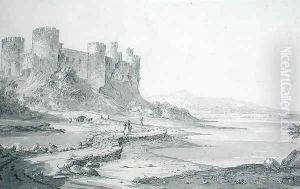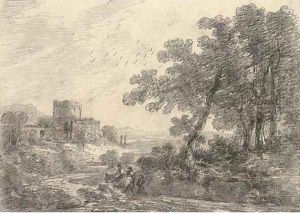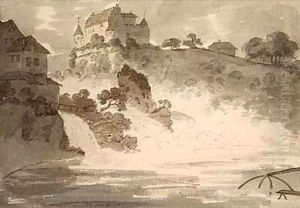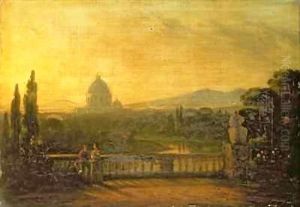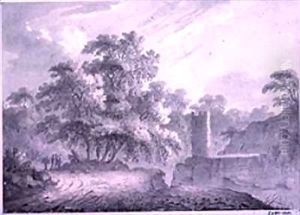Sir George Howland Beaumont Paintings
Sir George Howland Beaumont, 7th Baronet, was born on November 6, 1753, in Great Dunmow, Essex, England, into a family with a long lineage of wealth and societal influence. Although he is primarily remembered for his significant contributions to the arts and culture of Britain during the late 18th and early 19th centuries, Beaumont was also a talented painter, albeit his reputation as an art patron and benefactor overshadows his artistic endeavors. He studied at Eton College and was later admitted to the Grand Tour, a traditional trip of Europe undertaken by mainly upper-class European young men of the time, aimed at enriching their education and cultural exposure. It was during these travels that Beaumont's profound love for art was nurtured, significantly influencing his later life.
Beaumont's artistic interests were wide-ranging, but he had a particular affection for landscape painting, an affinity that led to his close friendship with the renowned landscape painter John Constable. Moreover, his estate at Coleorton Hall in Leicestershire became a hub for artists and writers, including the poet William Wordsworth, who was deeply influenced by Beaumont's taste and collection. Beaumont's legacy in the art world is perhaps most tangibly reflected in his generous donation of 16 paintings to the National Gallery, London, at its inception. This act of philanthropy was instrumental in the establishment of the Gallery's collection and helped to ensure public access to significant works of art.
Throughout his life, Sir George Beaumont was deeply involved in the British art scene, not only through his patronage but also by advocating for the importance of public access to art and the need for national support for the arts. He was a key figure in the founding of the British Institution in 1805, which aimed to foster public appreciation for the arts and to support artists. His contributions to the art world were recognized by his contemporaries, and his impact continued to be acknowledged long after his death in 1827. Sir George Howland Beaumont's legacy is that of a visionary who understood the value of art in society and worked tirelessly to make it accessible to all.
